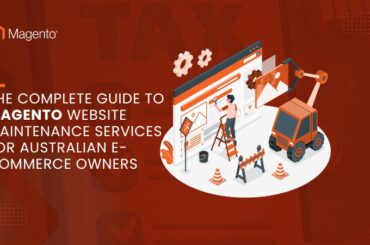Improve Magento Store Speed: A Guide for Sydney Entrepreneurs
Last Updated | October 9, 2024
Table of Contents
Magento e-commerce stores operate in a competitive space, compelling Sydney entrepreneurs to ensure their stores are responsive and load fast. If they want a top-tier user experience, high conversions, and consistent revenue, Magento 2 speed optimization is the way to go.
Sydney entrepreneurs who want their Magento stores to stand out and deliver a world-class experience must optimize their stores to run smoothly and quickly. A change is necessary, and with Folio3, we can simplify the entire ordeal and help e-commerce businesses achieve their goals. This article explains Magento speed optimization for entrepreneurs that want to know how this change works and what the impact is.
Knowing How Speed Impacts A Magento Store
The e-commerce industry is incredibly competitive, and every store must operate at the top of its game. A minor delay, e.g., slow page load times, hinders the user experience on Magento stores.
The consequences of slow Magento stores include:
– Cart abandonment before checking out because a competitor had a faster website
– A negative perception among customers and on social media results in reduced loyalty and customer satisfaction
– Slow store loading speeds cause users to lose patience and leave the website, resulting in lost consumer traffic and revenue.
The impact of speed on the Magento store extends further when working to bring in more leads to the business. Google and other major search engines rank websites that load faster and higher on SERPs, resulting in more organic traffic coming to the store.
The main factors include:
– The store load time from when the user clicks on it to when it loads completely.
– The time to first byte (TTFB) is the time it takes a server to send the first byte of stored data to your browser.
– The server response time is when it takes the server to process a request and generate a response.
Read Also: How Custom Magento Development Enhances Your Melbourne Store’s Checkout Experience
Reasons For Slow Magento Performance
Magento is the go-to B2B ecommerce solution globally, but despite all its features, it also experiences performance issues when incorrectly optimized.
The main reasons for slow Magento performance include:
Improper Server Configuration
Servers with insufficient CPU power, memory, and storage throttle performance by not allowing proper data flow. Additionally, incorrect PHP settings, database connections, and caching mechanisms are notorious for slowing down Magento store performance.
Excessive Themes and Extensions
Magento store themes that use too many images, JavaScript, and CSS slow down store load times. It takes too much time to load everything, dissuading the customer from sticking around long enough. Moreover, poorly coded Magento extensions take up extra system resources without offering much value – a loss for the store.
Poor Database Optimization
Magento databases can grow exponentially, slowing query execution. Combined with poorly optimized SQL queries, this creates the perfect recipe for strained database servers. Additionally, incomplete or outdated indexes slow down data retrieval, further slowing down your Magento store.
Caching Issues
Magento stores with incorrectly configured caching mechanisms result in data displayed inconsistently and subsequent store performance issues. Additionally, caching purging issues prevent the store from serving and displaying updated content.
Improper Image Optimization
Large images take more time to load when a page opens, and if there are multiple, the impact is amplified. Images that are incorrectly compressed take more bandwidth to process, resulting in slower loading times.
Too Many External Services and APIs
While Magento supports external integrations, adding too many slows everything down. If these external services slow down or stop working, the entire store stops responding, and the business suffers. Adding too many APIs has the same impact on Magento stores, slowing them down and hampering business.
Speed Optimization Techniques for Magento
Now that we’ve addressed the reasons that cause Magento stores to slow down, it’s time to solve them.
Here’s what to do when improving Magento 2 page speed optimization, visibility, and conversion rates of your stores:
Improved Server Optimization
– Choose a reputable hosting provider for better performance and reliability.
– Utilize a content delivery network (CDN) that significantly reduces page load times by caching static content closer to your site visitors.
– Optimize server configuration with sufficient resources (CPU, memory, storage) and optimize PHP settings for performance.
Better Code Optimization
– Minimize HTTP requests by combining CSS and JavaScript files, inlining critical CSS, and using sprites for images.
– Leverage browser caching for static assets (images, CSS, JavaScript). This reduces server load and improves page load times.
– Optimize database queries using indexes, avoid unnecessary queries, and improve database performance by optimizing SQL queries.
Better Image Optimization
– Compress images with tools like TinyPNG or ImageOptim. This compresses images without sacrificing picture quality.
– Resize images appropriately to the appropriate dimensions for their usage on the website.
– Use lazy loading to defer the loading times on images not immediately visible on the page. This improves initial page load times.
Improved Caching
– Enable full-page caching to reduce server load and improve page load times.
– Optimize cache settings to ensure cached content is updated when required.
– Use a caching plugin like Varnish or Redis to improve caching performance.
Cosmetic Optimization
– Disable unnecessary extensions that are not essential for a store’s functionality.
– Use lightweight themes designed for performance to avoid excessive JavaScript and CSS use.
– Optimize extensions to ensure that they are correctly coded and optimized for performance.
Monitoring and Testing
– Use tools like Google PageSpeed Insights or GTmetrix to monitor website performance and identify areas for improvement.
– Test on different devices and browsers to ensure the website performs on various devices and browsers.
Conclusion
If you’ve gotten to this point, you’ve learned much of what Magento speed optimization does. Here are the key takeaways:
Slow Magento performance is caused by:
– Incorrect server configurations
– Using heavy themes
– Too many extensions,
– Improper database and image optimization,
– Various caching issues,
– Excessive external services.
Magento speed optimization strategies include:
– Proper code and image optimization
– Proper server optimization
– Improving store appearances
– Using better caching mechanisms
– Monitoring changes and improving performance
Read Also: How Custom Magento Development Enhances Your Melbourne Store’s Checkout Experience








